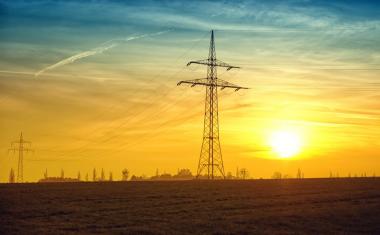
Modi's government's development and welfarist image underwent a boost by announcing a mega scheme to provide electricity connections to four crore families deprived of regular power.
Modi launched a INR 16,000-crore scheme, Pradhan Mantri Sahaj Bijli Har Ghar Yojana (shortened to Saubhagya, meaning good fortune).
This yojana promises free electricity connections by December 2018. However, customers will have to pay the monthly power bill.
A large number of people lacked electricity connections more than a century after the invention of the incandescent bulb.
Even 70 years after Independence, four crore out of 25 crore families did not have a power connection.
The scheme reflects the Modi government's focus on delivering on schemes like housing, power, loans and farm insurance to key sections of the electorate.
Alongside electrification, the PM Awas Yojana has sanctioned more than 26 lakh houses for the urban poor and more than 1.76 lakh units have been constructed.
Another 11 lakh are being built while two lakh houses are complete under JNNURM.
The total outlay of the project is INR 16, 320 crore while the Gross Budgetary Support (GBS) is INR 12,320 crore.
The outlay for the rural households is INR 14,025 crore while the GBS is INR 10,587.50 crore.
For the urban households the outlay is INR 2,295 crore while GBS is INR 1,732.50 crore. The Government of India will provide largely funds for the Scheme to all States/UTs.
The States and Union Territories are required to complete the works of household electrification by the 31st of December 2018.
The beneficiaries for free electricity connections would be identified using Socio Economic and Caste Census (SECC) 2011 data.
However, un-electrified households not covered under the SECC data would also be provided electricity connections under the scheme on payment of Rs. 500 which shall be recovered by DISCOMs in 10 instalments through electricity bill.
The solar power packs of 200 to 300 Wp with battery bank for un-electrified households located in remote and inaccessible areas, comprises of Five LED lights, One DC fan, One DC power plug. It also includes the Repair and Maintenance (R&M) for 5 years.
Outcomes of the SchemeThe expected outcome of the Scheme is as follows:a. Environmental upgradation by substitution of Kerosene for lighting purposes
b. Improvement education services
c. Better health services
d. Enhanced connectivity through radio, television, mobiles, etc.
e. Increased economic activities and jobs
f. Improved quality of life especially for women
Technology for the Scheme- For easy & accelerated implementation of the Scheme , modern technology shall be used for household survey by using Mobile App.
- Beneficiaries shall be identified and their application for electricity connection along with applicant photograph and identity proof shall be registered on spot.
- The Gram Panchayat/Public institutions in the rural areas may be authorised to collect application forms along with complete
- documentation, distribute bills and collect revenue in consultation with the Panchayat Raj Institutions and Urban Local Bodies.
- The Rural Electrification Corporation Limited (REC) will remain the nodal agency for the operationalisation of the scheme throughout the country.
On the occasion of the birth anniversary of Pandit Deendayal Upadhyay, the Prime Minister also dedicated a new ONGC building - the Deendayal Urja Bhawan.
The Prime Minister also dedicated to the nation, the Booster Compressor Facility in Bassein Gas Field.
Increase in renewable power installed capacity, towards the target of 175 GW by 2022 was aimed for.
New India will require an energy framework that works on the principle of equity, efficiency and sustainability. A change in work culture in the Union Government is strengthening the energy sector. This in turn, will positively impact the work culture of the entire country.